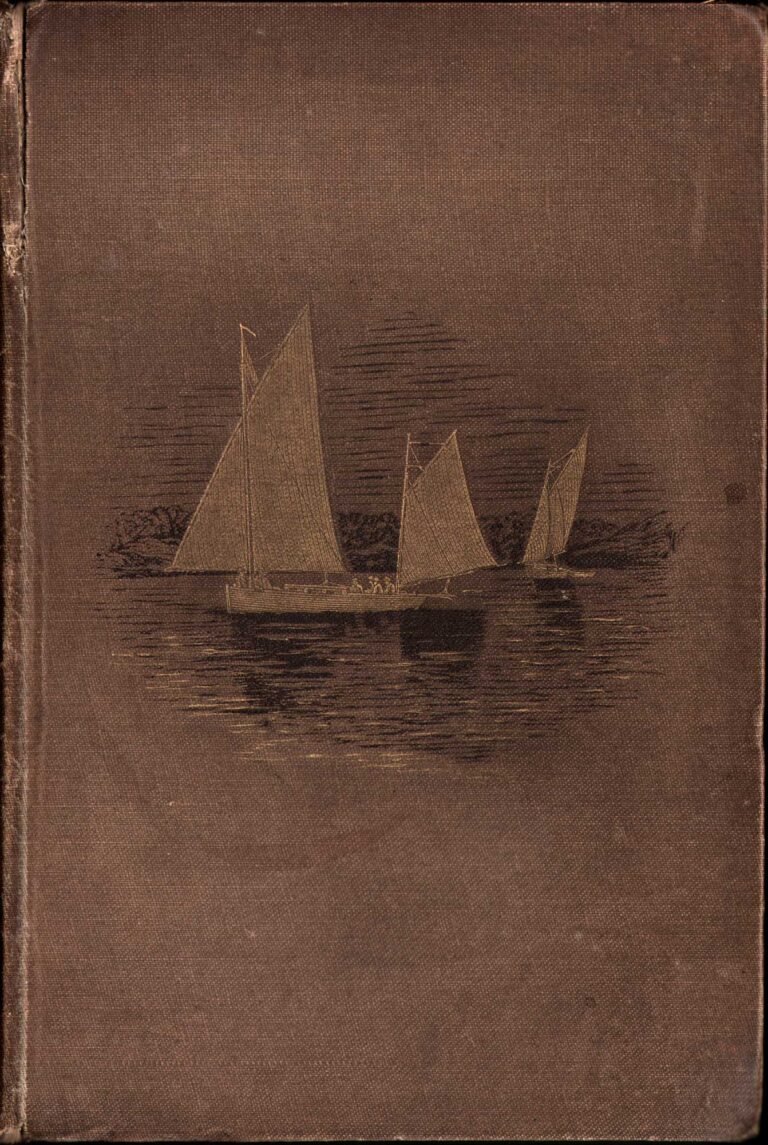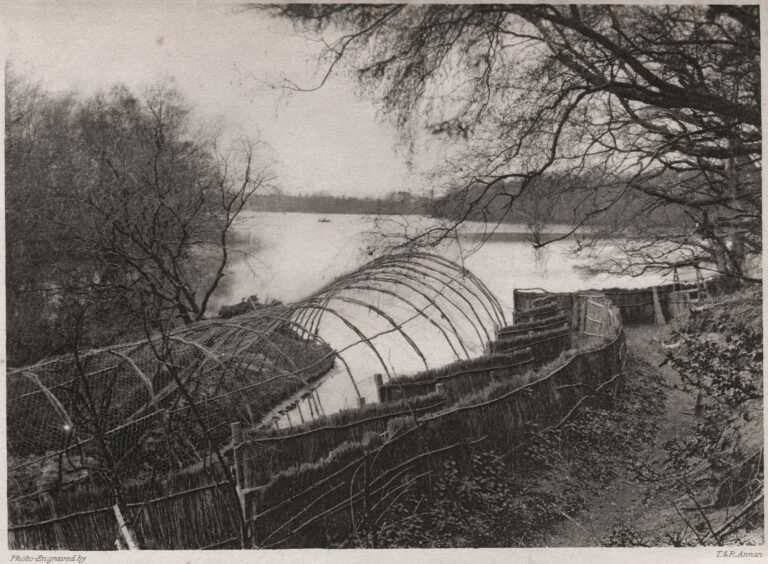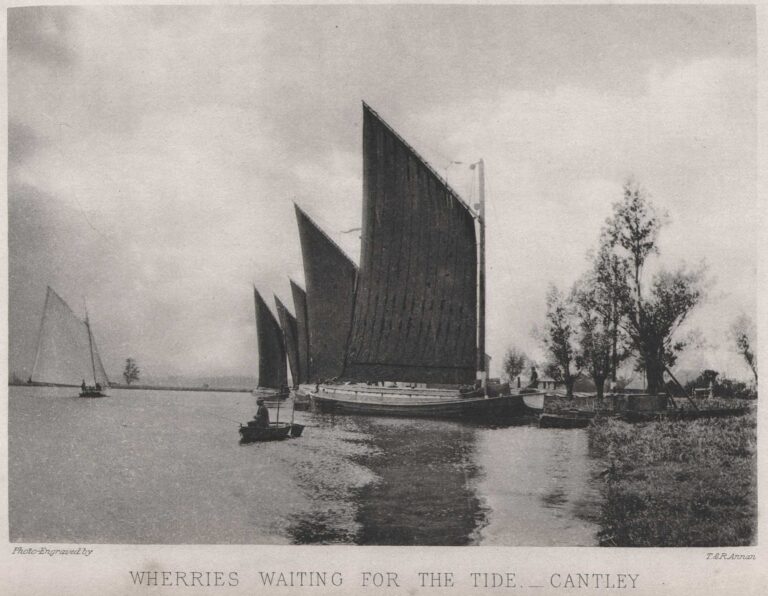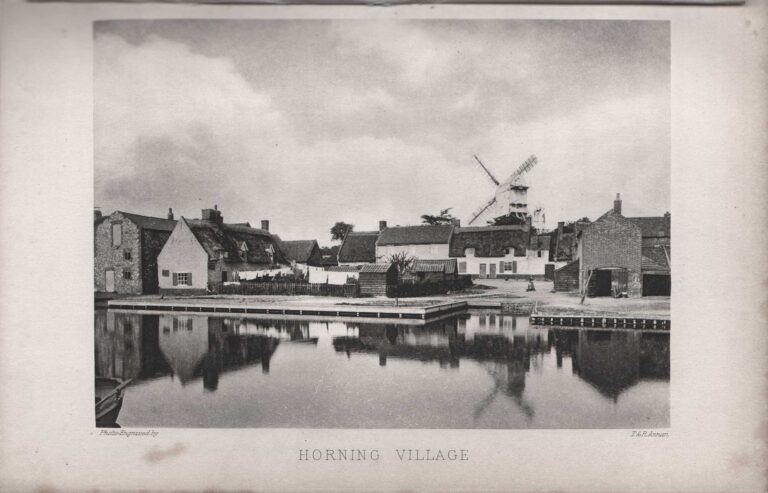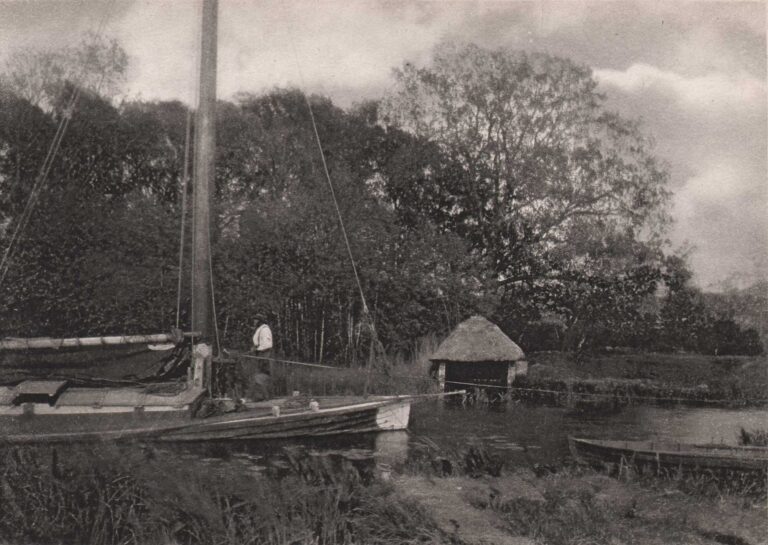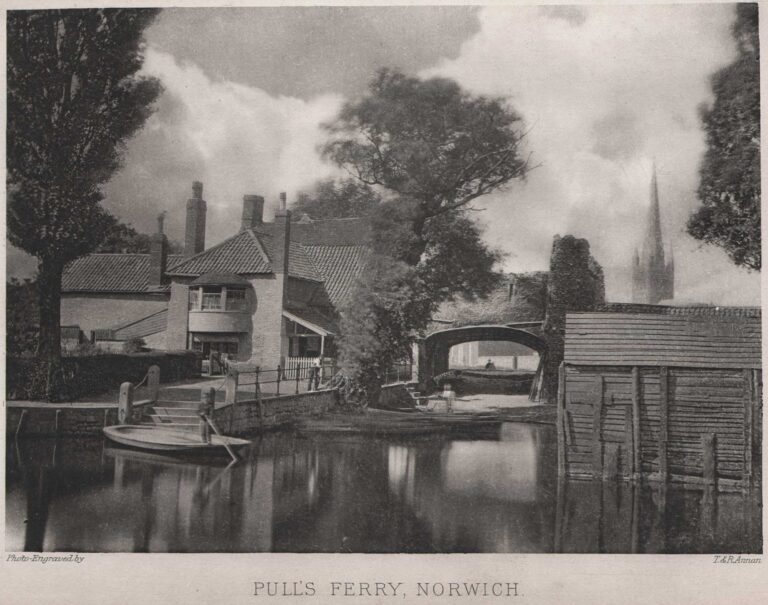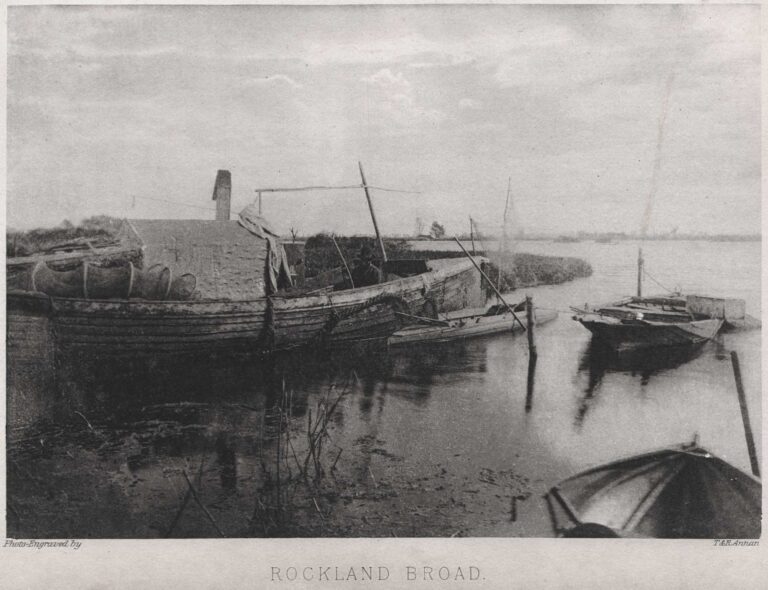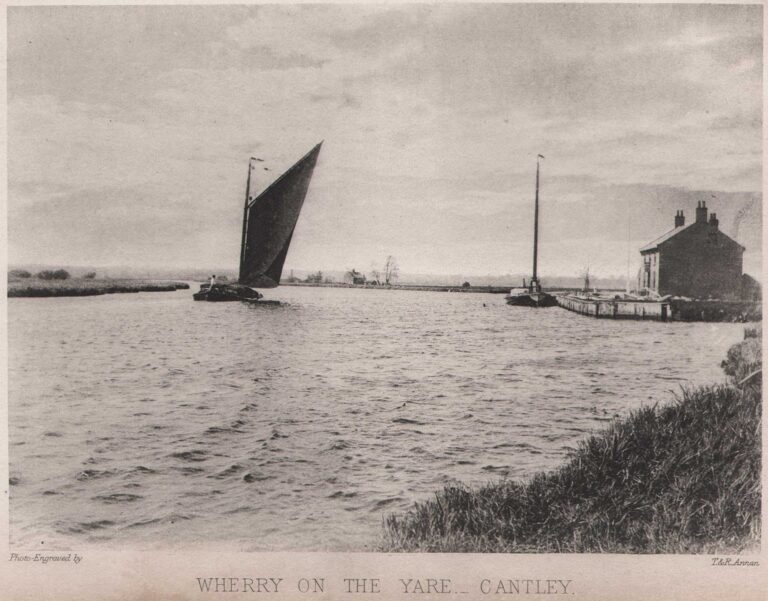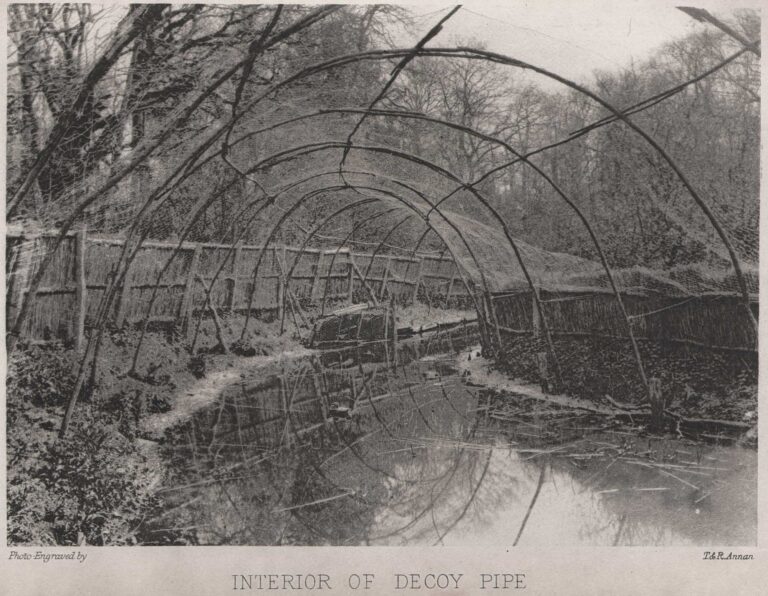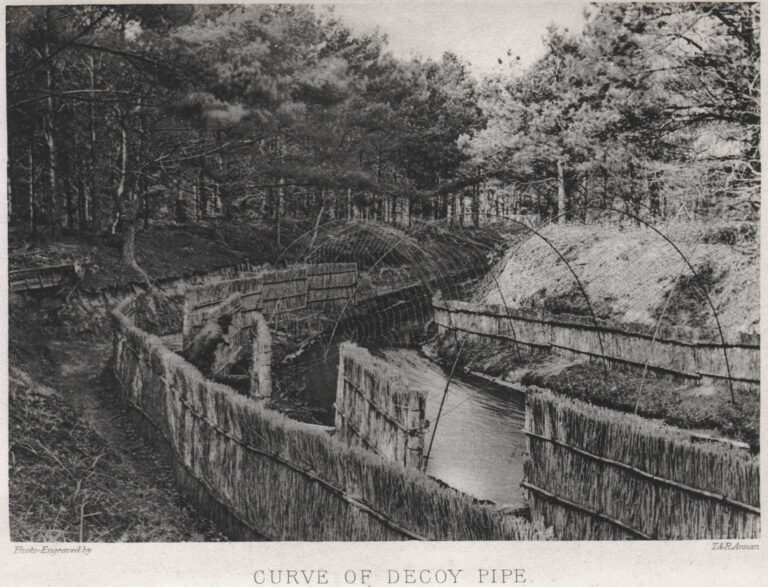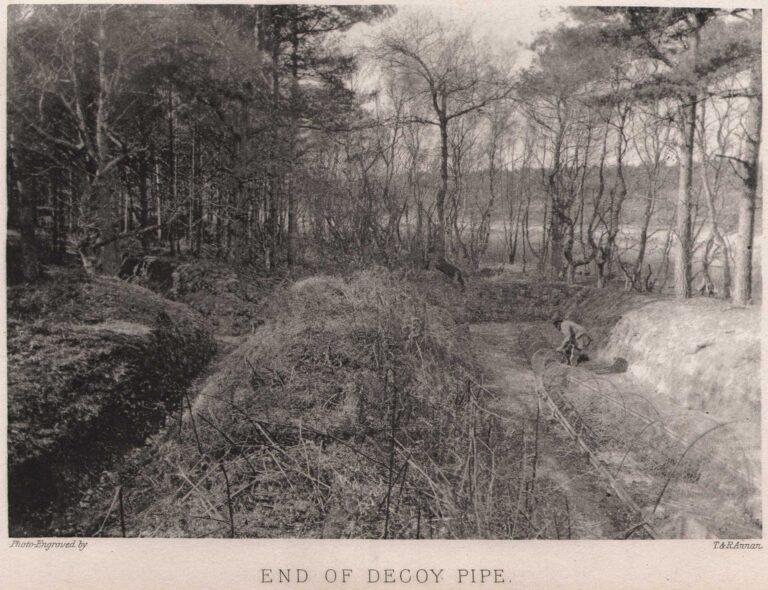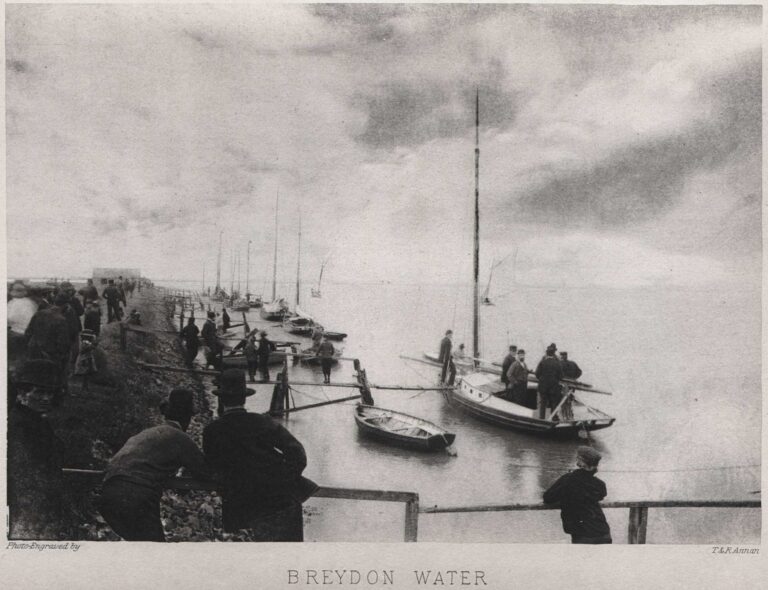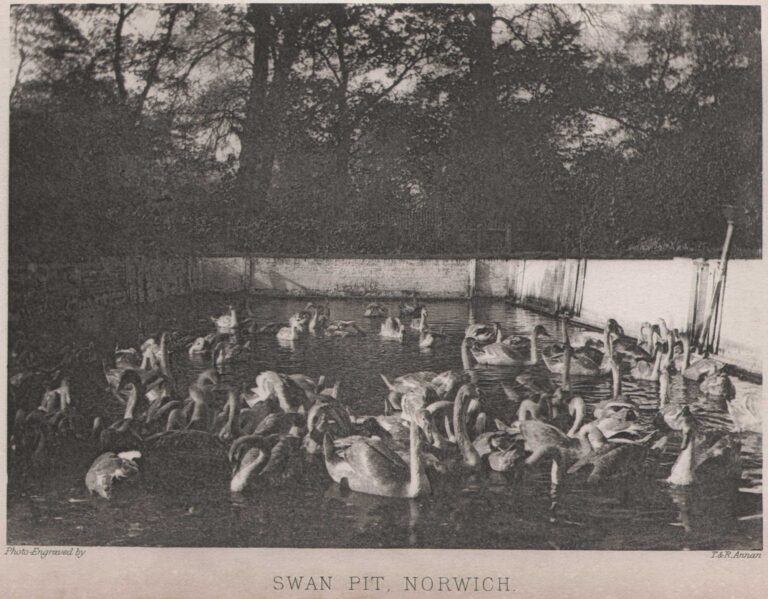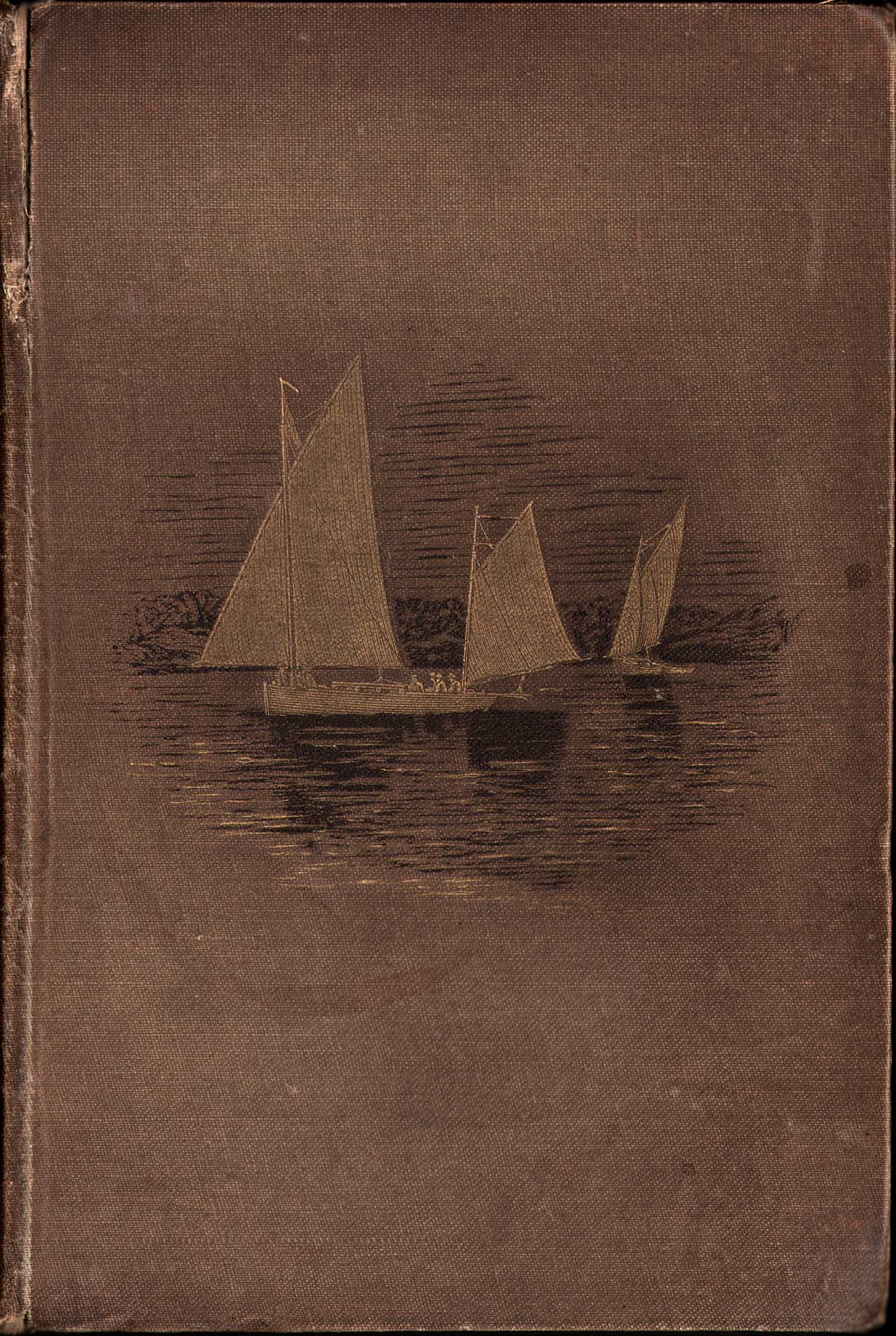
Norfolk Broads and Rivers: Or, The Water-ways, Lagoons, and Decoys of East Anglia
The volume Norfolk Broads and Rivers: Or, The Water-ways, Lagoons, and Decoys of East Anglia first appeared in 1883 by English author, naturalist and amateur photographer George Christopher Davies. (1849-1922)
The first edition featured 12 hand-pulled photogravure plates, 11 by Davies. Photogravure.com notes this may have been the first book illustrated with the new process of copper plate photogravure in Britain, after James Craig Annan and his father Thomas Annan learned the process from and secured the rights to the process from Karl Klíc in Vienna earlier the same year.
During his 1882 sailing voyages aboard the Coya, a 20’, four-ton yacht described as “especially adapted for single-handed sailing” and later the improved yacht the Swan: “a varnished oak 4-ton centre-board, with unusual accommodation for her size”, the author navigates the rivers and broads, located in the United Kingdom county of Norfolk. (extending into Suffolk) The Broads are man-made waterways and lakes formed when first dug for their peat beginning in the 12th century.
His book was massively popular, and would go into multiple printings, and is credited with popularizing the Norfolk Broads not only regionally, but as a holiday destination for avid mariners throughout Great Britain. Several contemporary reviews attest to the volume’s popularity. In 1886: Westminster Review: “A charming description of the inland seas of Norfolk and their inhabitants, human and other……. The author describes his yachting adventures with such piquancy and verve, that we find ourselves mentally resolving to devote our next autumn holidays to sailing the Broads instead of climbing the Alps.” And the same year, in the publication Land and Water: “It is doubtless the handsomest as well as the most interesting of all descriptions of the Broads, and will preserve the memory of a paradise for naturalists and sportsmen.“
Photographing the Norfolk Broads and Rivers
In an early chapter to the 1883 book, while traveling aboard the aforementioned Coya, Davies: aka: “the skipper”, describes his methods of photography which would result in the photogravures seen here as well as two special editions of gravures published by Jarrold & Sons later the same year:
“And now we became subject to the slavery of the photographic-box. Whenever we saw a picturesque drainage windmill, a cottage in a group of trees, ancient ruins, yachts or wherries, making a pretty picture, “Oh, we must have that!” and the yacht was run up to the bank. The mate would drag forth the big box and deposit it on the skipper’s toes, and the skipper would trip up the mate with the tripod. Then the mate would do the focussing and exposing, while the skipper “shoo’d” off the too curious bullocks and cows, or dispensed valuable advice. We used the dry-plate process of course, and had the plates developed when we got home. We over-exposed most of them, for it seemed impossible that a second’s exposure should suffice; and the skipper constantly urged, when not engaged with the cows, “Give it another second to make sure.” Still we obtained a great number of excellent pictures, well worth all the tides and winds we lost through the constantly recurring delays.” (pp. 38-39)
This first edition would be the sole production illustrated with Davies photographs, made from copper plates by T. & R. Annan, Glasgow. The subsequent, expanded and “cheap” editions that followed would only feature woodcuts of the photographer’s work.
